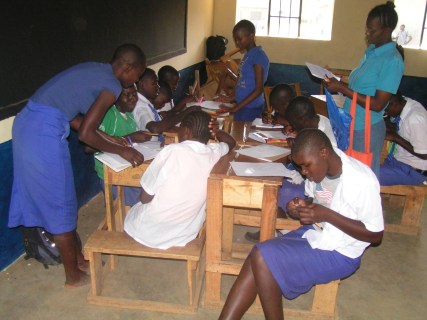
Hello! We are St. Stephen’s Eshiakhulo Secondary School in Kenya. Our WILD Nature activities involved groupwork around two tasks – messages of plants and making dolls with reused materials and natural materials. All students could work on the project they liked!
We hope our partner school, Toila Gymnasium will see them and organize their project work around the same topic.
Here you can see the pictures we draw. The most important plants in our nature are sugar cane and lemon tree with local importance and coffee tree as an international export article.
The second group worked on making dolls. We used materials that we could easily find – plastic bags, seeds, plant fibers. It was really fun to get creative and make something with our hands! The ready-made dolls we brought to our younger siblings.
You can see the process from these pictures and the video:
One group got very artistic with their poster while using the colors of Kenyan national flag!One group got very artistic with their poster while using the colors of Kenyan national flag!
One group got very artistic with their poster while using the colors of Kenyan national flag!



































































